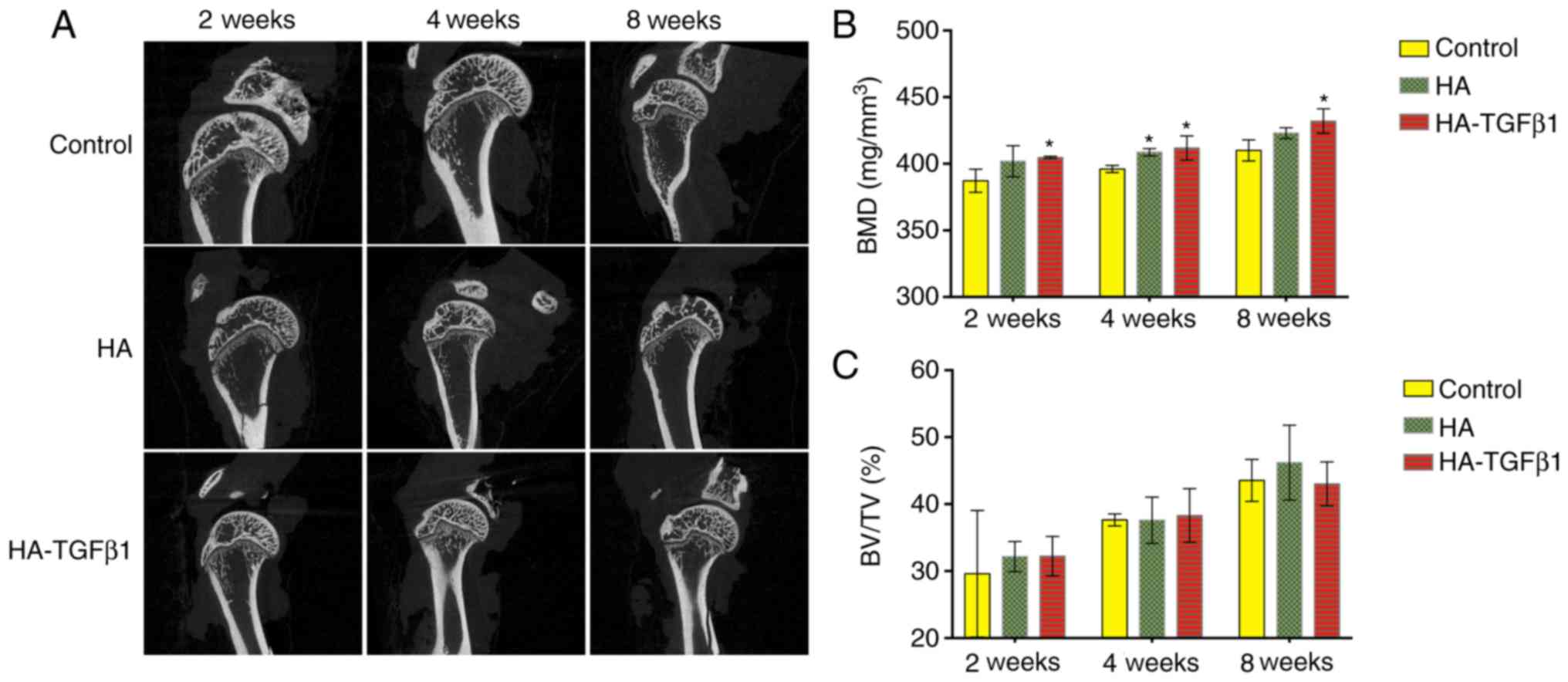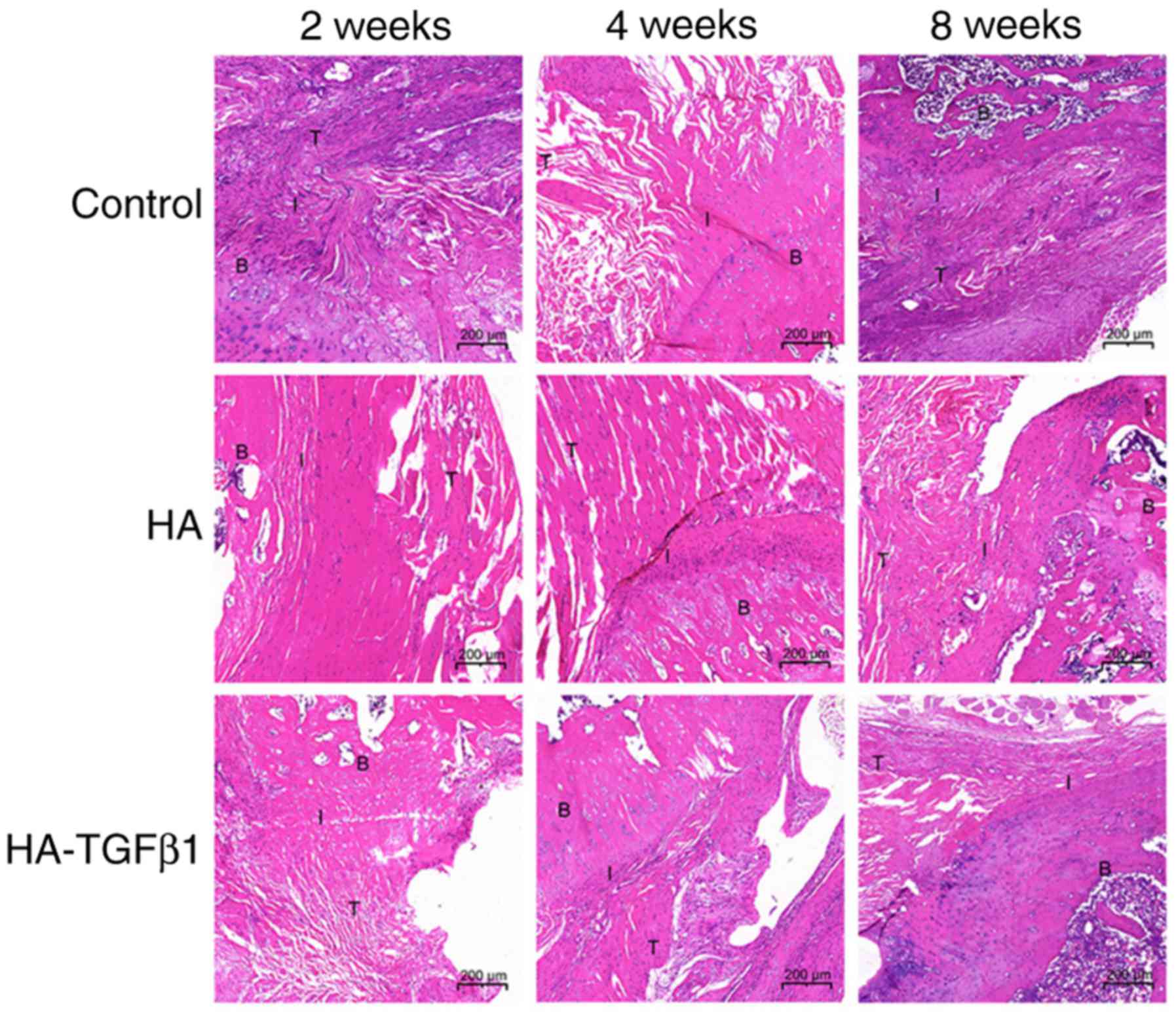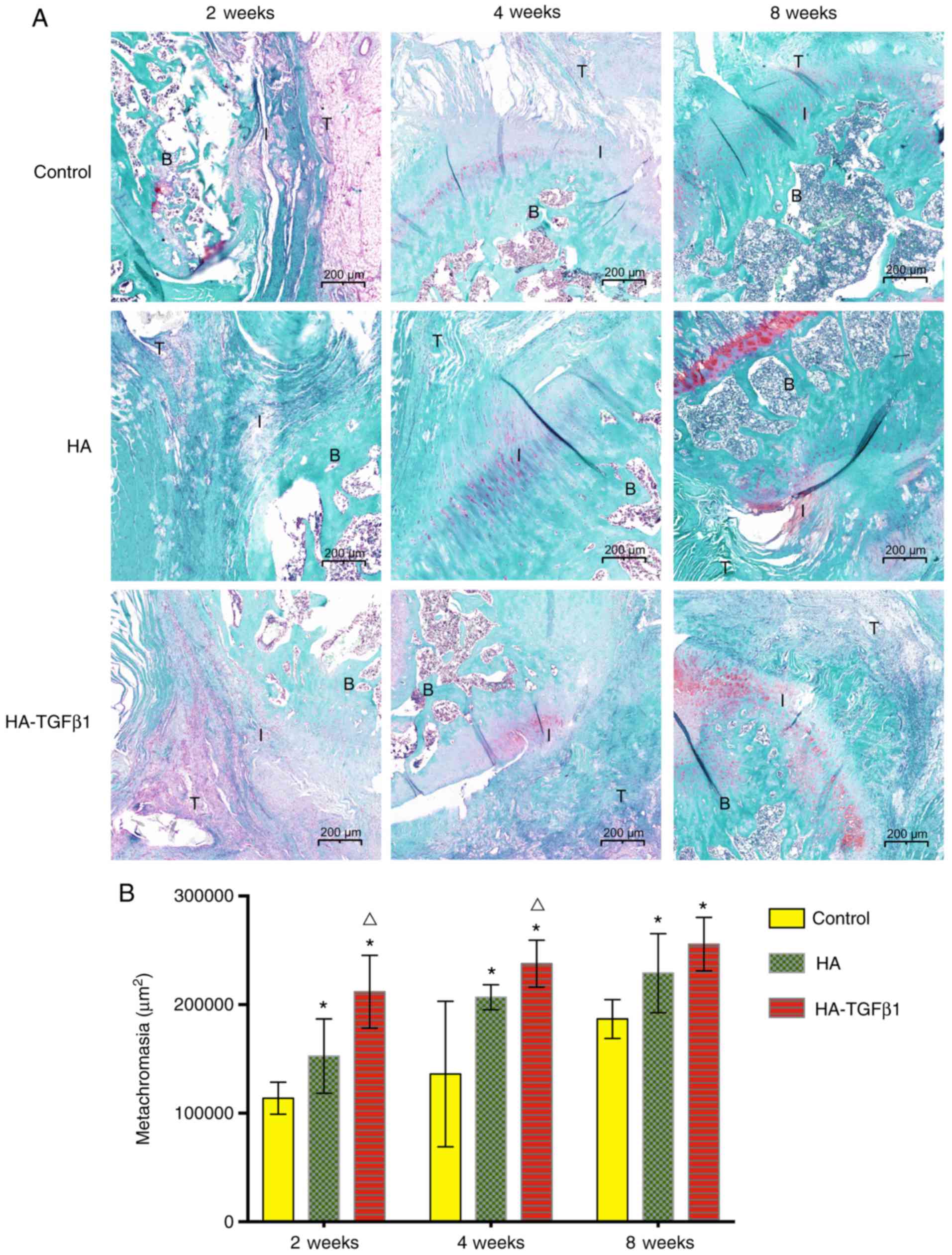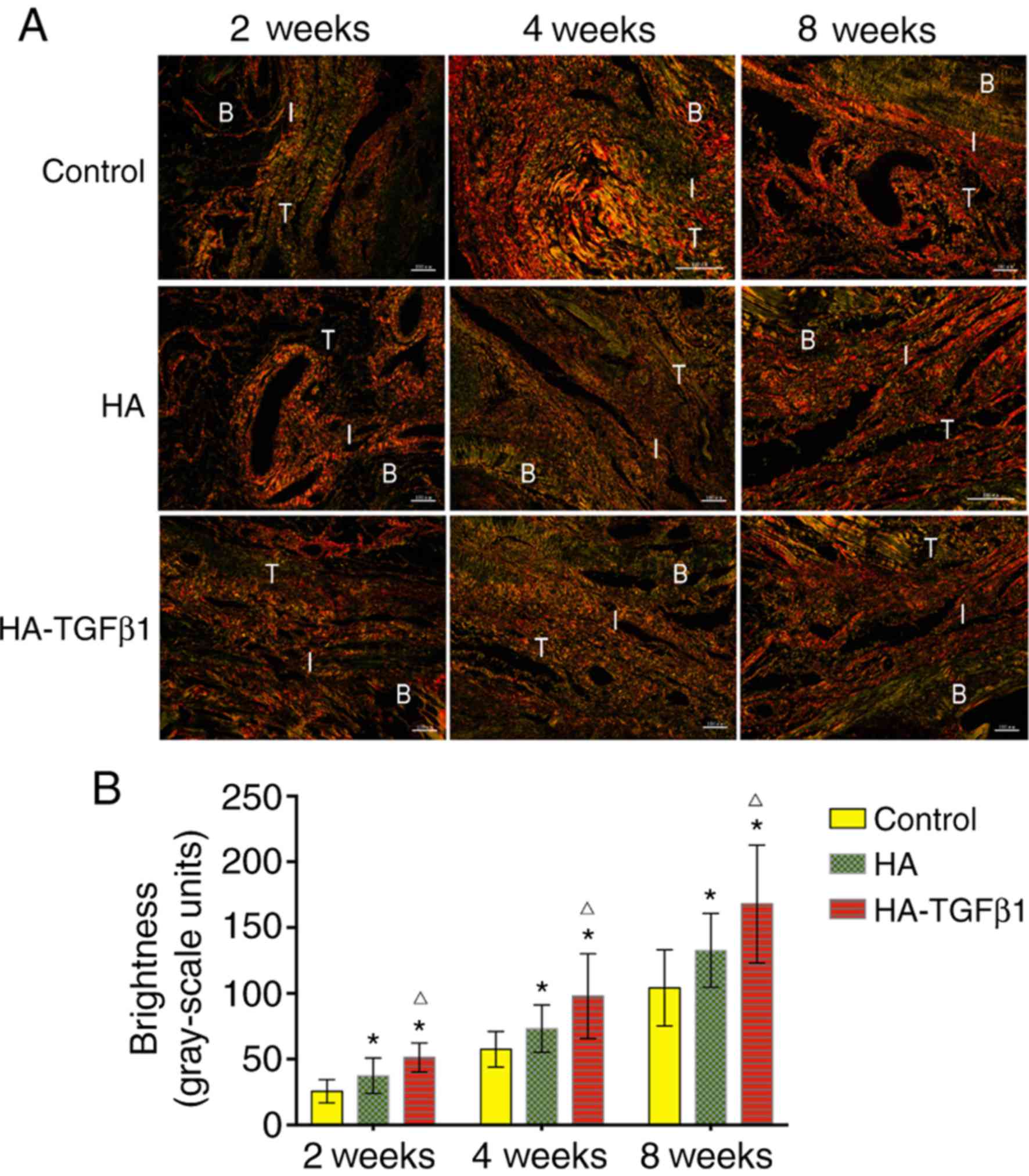|
1
|
Domb BG, Glousman RE, Brooks A, Hansen M,
Lee TQ and ElAttrache NS: High-tension double-row footprint repair
compared with reduced-tension single-row repair for massive rotator
cuff tears. J Bone Joint Surg Am. 90 Suppl 4:S35–S39. 2008.
View Article : Google Scholar
|
|
2
|
Nelson CO, Sileo MJ, Grossman MG and
Serra-Hsu F: Single-row modified mason-allen versus double-row
arthroscopic rotator cuff repair: A biomechanical and surface area
comparison. Arthroscopy. 24:941–948. 2008. View Article : Google Scholar : PubMed/NCBI
|
|
3
|
Ozbaydar M, Elhassan B, Esenyel C, Atalar
A, Bozdag E, Sunbuloglu E, Kopuz N and Demirhan M: A comparison of
single-versus double-row suture anchor techniques in a simulated
repair of the rotator cuff: An experimental study in rabbits. J
Bone Joint Surg Br. 90:1386–1391. 2008. View Article : Google Scholar : PubMed/NCBI
|
|
4
|
Boileau P, Brassart N, Watkinson DJ,
Carles M, Hatzidakis AM and Krishnan SG: Arthroscopic repair of
full-thickness tears of the supraspinatus: does the tendon really
heal? J Bone Joint Surg Am. 87:1229–1240. 2005. View Article : Google Scholar : PubMed/NCBI
|
|
5
|
Gerber C, Fuchs B and Hodler J: The
results of repair of massive tears of the rotator cuff. J Bone
Joint Surg Am. 82:505–515. 2000. View Article : Google Scholar : PubMed/NCBI
|
|
6
|
Zumstein MA, Jost B, Hempel J, Hodler J
and Gerber C: The clinical and structural long-term results of open
repair of massive tears of the rotator cuff. J Bone Joint Surg Am.
90:2423–2431. 2008. View Article : Google Scholar : PubMed/NCBI
|
|
7
|
Li H, Ge Y, Wu Y, Jiang J, Gao K, Zhang P,
Wu L and Chen S: Hydroxyapatite coating enhances polyethylene
terephthalate artificial ligament graft osseointegration in the
bone tunnel. Int Orthop. 35:1561–1567. 2011. View Article : Google Scholar : PubMed/NCBI
|
|
8
|
Huangfu X and Zhao J: Tendon-bone healing
enhancement using injectable tricalcium phosphate in a dog anterior
cruciate ligament reconstruction model. Arthroscopy. 23:455–462.
2007. View Article : Google Scholar : PubMed/NCBI
|
|
9
|
Zhao S, Peng L, Xie G, Li D, Zhao J and
Ning C: Effect of the interposition of calcium phosphate materials
on tendon-bone healing during repair of chronic rotator cuff tear.
Am J Sports Med. 42:1920–1929. 2014. View Article : Google Scholar : PubMed/NCBI
|
|
10
|
Gulotta LV and Rodeo SA: Growth factors
for rotator cuff repair. Clin Sports Med. 28:13–23. 2009.
View Article : Google Scholar : PubMed/NCBI
|
|
11
|
Kim HM, Galatz LM, Das R, Havlioglu N,
Rothermich SY and Thomopoulos S: The role of transforming growth
factor beta isoforms in tendon-to-bone healing. Connect Tissue Res.
52:87–98. 2011. View Article : Google Scholar : PubMed/NCBI
|
|
12
|
Pryce BA, Watson SS, Murchison ND,
Staverosky JA, Dünker N and Schweitzer R: Recruitment and
maintenance of tendon progenitors by TGFbeta signaling are
essential for tendon formation. Development. 136:1351–1361. 2009.
View Article : Google Scholar : PubMed/NCBI
|
|
13
|
Manning CN, Kim HM, Sakiyamaelbert SE,
Sakiyama-Elbert S, Galatz LM, Havlioglu N and Thomopoulos S:
Sustained delivery of transforming growth factor beta three
enhances tendon-to-bone healing in a rat model. J Orthop Res.
29:1099–1105. 2011. View Article : Google Scholar : PubMed/NCBI
|
|
14
|
Arimura H, Shukunami C, Tokunaga T,
Karasugi T, Okamoto N, Taniwaki T, Sakamoto H, Mizuta H and Hiraki
Y: TGF-β1 improves biomechanical strength by extracellular matrix
accumulation without increasing the number of tenogenic lineage
cells in a rat rotator cuff repair model. Am J Sports Med.
45:2394–2404. 2017. View Article : Google Scholar : PubMed/NCBI
|
|
15
|
Anaguchi Y, Yasuda K, Majima T, Tohyama H,
Minami A and Hayashi K: The effect of transforming growth
factor-beta on mechanical properties of the fibrous tissue
regenerated in the patellar tendon after resecting the central
portion. Clin Biomech. 20:959–965. 2005. View Article : Google Scholar
|
|
16
|
Yamazaki S, Yasuda K, Tomita F, Tohyama H
and Minami A: The effect of transforming growth factor-beta1 on
intraosseous healing of flexor tendon autograft replacement of
anterior cruciate ligament in dogs. Arthroscopy. 21:1034–1041.
2005. View Article : Google Scholar : PubMed/NCBI
|
|
17
|
Qi C, Zhu YJ, Lu BQ, Zhao XY, Zhao J, Chen
F and Wu J: Hydroxyapatite hierarchically nanostructured porous
hollow microspheres: Rapid, sustainable microwave-hydrothermal
synthesis by using creatine phosphate as an organic phosphorus
source and application in drug delivery and protein adsorption.
Chemistry. 19:5332–5341. 2013. View Article : Google Scholar : PubMed/NCBI
|
|
18
|
Galatz LM, Sandell LJ, Rothermich SY, Das
R, Mastny A, Havlioglu N, Silva MJ and Thomopoulos S:
Characteristics of the rat supraspinatus tendon during
tendon-to-bone healing after acute injury. J Orthop Res.
24:541–550. 2006. View Article : Google Scholar : PubMed/NCBI
|
|
19
|
Canullo L, Heinemann F, Gedrange T, Biffar
R and Kunert-Keil C: Histological evaluation at different times
after augmentation of extraction sites grafted with a
magnesium-enriched hydroxyapatite: Double-blinded randomized
controlled trial. Clin Oral Implants Res. 24:398–406. 2013.
View Article : Google Scholar : PubMed/NCBI
|
|
20
|
Hamerschmidt R, Santos RF, Araújo JC,
Stahlke HJ Jr, Agulham MA, Moreira AT and Mocellin M:
Hydroxyapatite granules used in the obliteration of mastoid
cavities in rats. Braz J Otorhinolaryngol. 77:315–321. 2011.(In
English, Portuguese). View Article : Google Scholar : PubMed/NCBI
|
|
21
|
Gredes T, Gedrange T, Hinuber C, Gelinsky
M and Kunert-Keil C: Histological and molecular-biological analyses
of poly(3-hydroxybutyrate) (PHB) patches for enhancement of bone
regeneration. Ann Anat. 199:36–42. 2015. View Article : Google Scholar : PubMed/NCBI
|
|
22
|
Kovacevic D, Fox AJ, Bedi A, Ying L, Deng
XH, Warren RF and Rodeo SA: Calcium-phosphate matrix with or
without TGF-β3 improves tendon-bone healing after rotator cuff
repair. Am J Sports Med. 39:811–819. 2011. View Article : Google Scholar : PubMed/NCBI
|
|
23
|
Wang R, Xu B and Xu HG: Up-regulation of
TGF-β promotes tendon-to-bone healing after anterior cruciate
ligament reconstruction using bone marrow-derived mesenchymal stem
cells through the TGF-β/MAPK signaling pathway in a new zealand
white rabbit model. Cell Physiol Biochem. 41:213–226. 2017.
View Article : Google Scholar : PubMed/NCBI
|
|
24
|
Li B, Shao Q, Ji D, Li F and Chen G:
Mesenchymal stem cells mitigate cirrhosis through BMP7. Cell
Physiol Biochem. 35:433–440. 2015. View Article : Google Scholar : PubMed/NCBI
|
|
25
|
Tang Y, Wu X, Lei W, Pang L, Wan C, Shi Z,
Zhao L, Nagy TR, Peng X, Hu J, et al: TGF-beta1-induced migration
of bone mesenchymal stem cells couples bone resorption with
formation. Nat Med. 15:757–765. 2009. View
Article : Google Scholar : PubMed/NCBI
|
|
26
|
Li J, Zhao Z, Liu J, Huang N, Long D, Wang
J, Li X and Liu Y: MEK/ERK and p38 MAPK regulate chondrogenesis of
rat bone marrow mesenchymal stem cells through delicate interaction
with TGF-beta1/Smads pathway. Cell Prolif. 43:333–343. 2010.
View Article : Google Scholar : PubMed/NCBI
|
|
27
|
Carpenter JE, Thomopoulos S, Flanagan CL,
DeBano CM and Soslowsky LJ: Rotator cuff defect healing: A
biomechanical and histologic analysis in an animal model. J
Shoulder Elbow Surg. 7:599–605. 1998. View Article : Google Scholar : PubMed/NCBI
|
|
28
|
Soslowsky LJ, Carpenter JE, Debano CM,
Banerji I and Moalli MR: Development and use of an animal model for
investigations on rotator cuff disease. J Shoulder Elbow Surg.
5:383–392. 1995. View Article : Google Scholar
|














